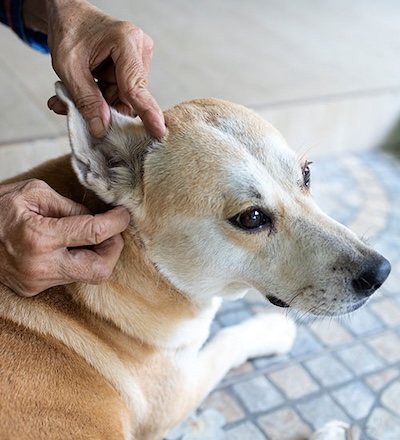It’s that time of year! With the rising temperatures, we are all spending more time outside, including those pesky little bugs!
Our beloved pets bring us endless joy, but along with their cuddles and playfulness, they can also attract unwanted guests – fleas and ticks. These tiny creatures might seem harmless at first glance, but they can pose serious health risks to our furry companions. Let’s dive into what fleas and ticks are, the problems they can cause, and how you can protect your pet.

What Are Fleas and Ticks?
Fleas and ticks are small parasites that feed on the blood of animals and humans. Here’s a brief overview of each:
- Fleas: These minuscule, wingless insects are notorious for causing itching and discomfort in pets. Fleas reproduce rapidly, laying eggs in your pet’s fur and around your home. If left untreated, a small flea problem can quickly turn into a full-blown infestation.
- Ticks: Ticks are arachnids related to spiders and mites. They attach themselves to their hosts by burying their mouth into the skin and feeding on blood. Ticks can transmit serious illnesses such as Lyme disease, Rocky Mountain spotted fever, and ehrlichiosis to both pets and humans.
The Dangers They Pose

Fleas and ticks are more than just nuisances – they can lead to various health issues for your furry friend as well as you and your family members. Here are some of the dangers they pose:
- Skin Irritation: Flea bites can cause intense itching and allergic reactions in pets, leading to skin infections and hot spots.
- Anemia: In severe infestations, fleas can cause anemia, a condition characterized by a low red blood cell count. This can be especially dangerous for young, elderly, or sick pets.
- Disease Transmission: Ticks can transmit a range of diseases, including Lyme disease, which can cause joint pain, lethargy, and fever in pets.
- Allergic Reactions: Some pets may develop allergic reactions to flea or tick saliva, leading to symptoms such as itching, hair loss, and skin inflammation.
How to Protect Your Pet
Prevention is key when it comes to protecting your pet from fleas and ticks. Here are some effective strategies:

- Use Preventive Products: Talk to your veterinarian about flea and tick preventives suitable for your pet. These products come in various forms, including spot-on treatments, oral medications, and collars. They work by killing and repelling fleas and ticks, preventing infestations before they start.
- Keep Your Environment Clean: Regularly vacuum your home and wash your pet’s bedding to eliminate flea eggs and larvae. Outdoor areas where your pet spends time should also be treated for fleas and ticks.
- Perform Regular Checks: Inspect your pet for fleas and ticks after outdoor activities, especially in wooded or grassy areas. Pay close attention to areas such as the ears, armpits, and between the toes, where these parasites often hide.
- Maintain Good Grooming Habits: Regular grooming can help you spot fleas and ticks early and remove them before they have a chance to cause harm. Brushing your pet’s fur also helps to remove loose hair and debris, reducing the risk of infestation.
Fleas and ticks may be small, but they can cause big problems for our furry friends. By understanding the dangers they pose and taking preventive measures, you can keep your pet safe and healthy. Remember to consult your veterinarian for personalized advice on flea and tick control for your pet’s specific needs. With proper care and attention, you can enjoy many happy and tick-free moments with your beloved companion.

